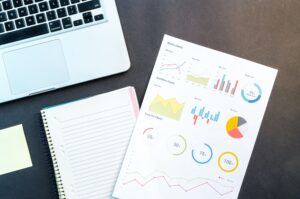
Mastering the Art of Effective Reports
Reports serve as structured, written presentations with a specific purpose, addressing the needs and interests of their readers. They come in various forms but share a common function: to provide an account, answer a question, or propose solutions to problems. To be effective, a report should possess several key qualities:
- Appropriateness: The report should align with its purpose and target audience. It must cater to the specific needs and expectations of the readers.
- Accuracy: Factual correctness is paramount. All information presented in the report should be rigorously researched and verified for accuracy.
- Logical: The report should follow a coherent and logical structure. Ideas should flow logically from one section to the next, making it easy for readers to follow the narrative.
- Clarity and Conciseness: The language and presentation of the report should be clear and concise, avoiding unnecessary jargon or verbosity.
- Well-Organized: The report should be well-organized, featuring clear section headings that guide readers to relevant information.
Standard Report Structure:
One of the key advantages of reports is their standardized format, which aids readers in locating specific information easily. Most reports adhere to a structure similar to the following:
- Transmittal Document: This optional cover letter or memo briefly introduces the report and its purpose. It may include details such as the sender, recipient, and date.
- Title Page: The title page presents essential information, including the report’s title, author’s name, date of submission, and often the name of the organization or institution.
- Table of Contents: The table of contents provides a clear outline of the report’s sections and page numbers, allowing readers to navigate to specific sections quickly.
- Abstract/Executive Summary: This concise summary offers an overview of the report’s key findings, conclusions, and recommendations. It provides a snapshot of the report’s content for busy readers.
- Introduction: The introduction sets the stage by introducing the report’s purpose, scope, and objectives. It may also provide background information and a clear statement of the problem or topic.
- Discussion: The discussion section constitutes the main body of the report. It presents the research, analysis, and evidence in a logical sequence. Subheadings may be used to divide this section into manageable subsections.
- Conclusions: In this section, the report draws conclusions based on the information presented in the discussion. It should recap the main findings and their implications.
- Recommendations: If applicable, the report offers actionable recommendations for addressing the issues discussed. These should be specific, practical, and based on the research findings.
- Bibliography: The bibliography lists all the sources and references used in the report. It follows a specific citation style, such as APA, MLA, or Chicago, to ensure proper attribution of sources.
By adhering to these principles and structures, reports become powerful tools for conveying information, addressing problems, and facilitating informed decision-making within organizations, academic institutions, and various professional settings.
